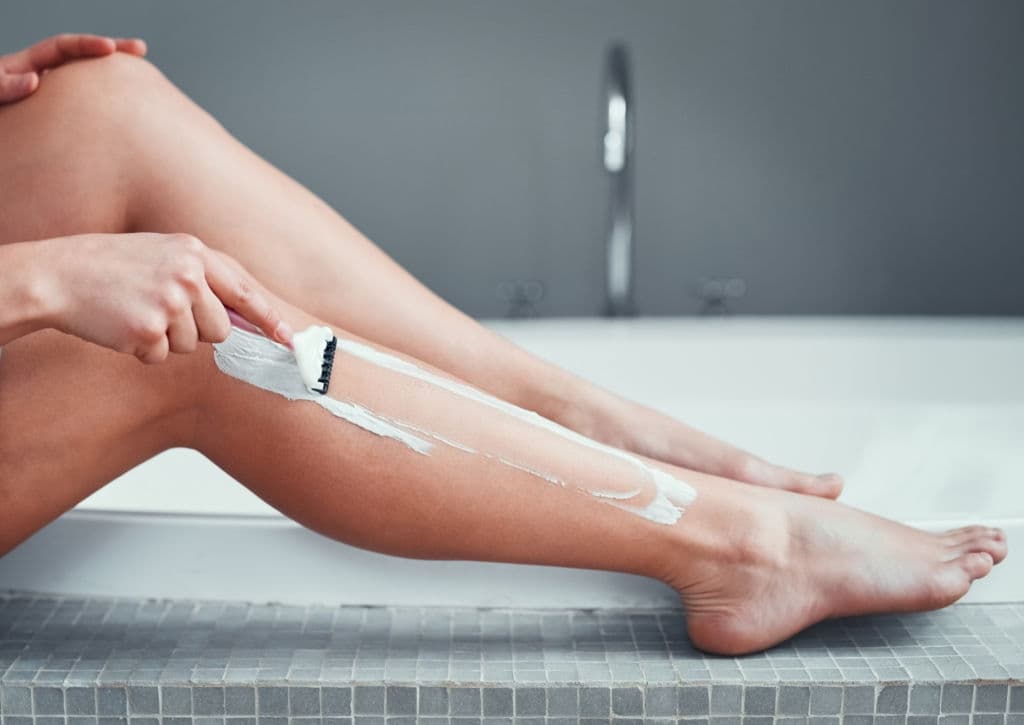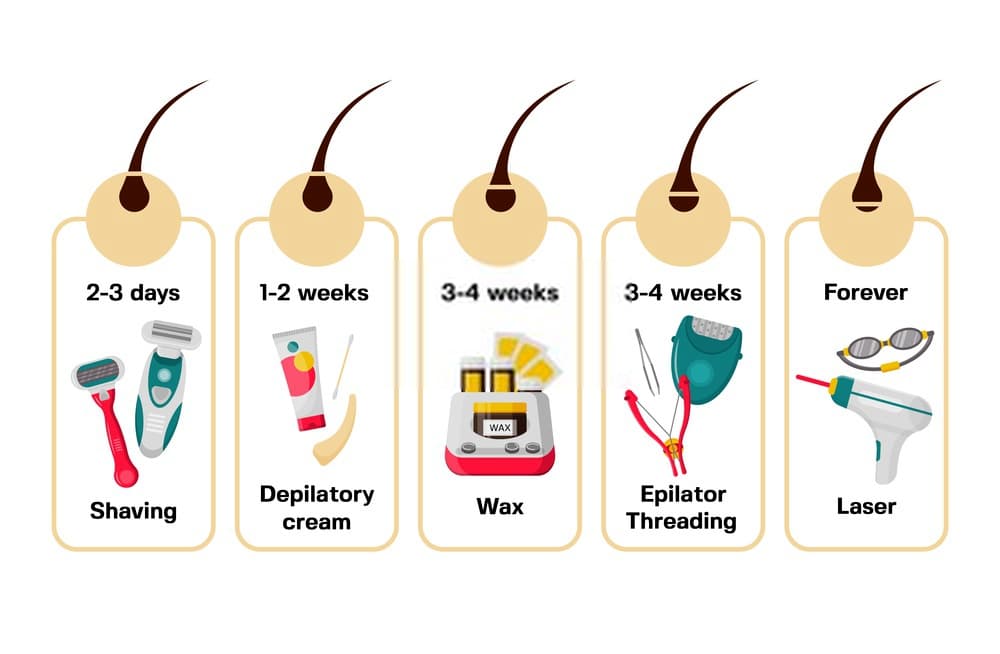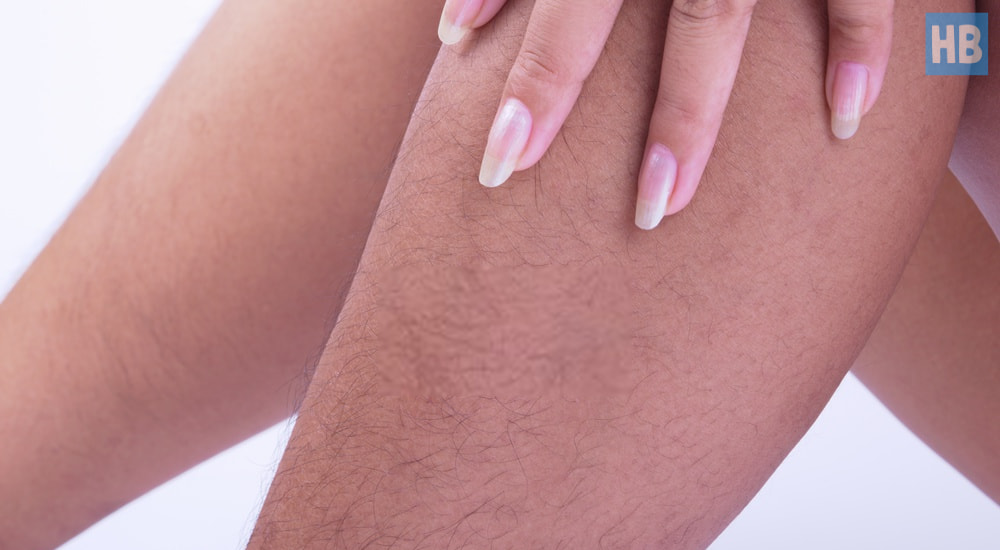Table of Contents
Having unwanted leg hair is already too much for many women. But adding a special case of “why does my leg hair grow so fast” on the mix? That would be a seriously frustrating situation to be in. Well, we like it to blame on shaving - or at least that’s the case for most women.
Many of us grew up believing that shaving makes our hair grow back faster and thicker. Nonetheless, even if we believed it to be so, tons of ladies still opt to shave since it's quick and painless. But is shaving really the one to blame? Does shaving or any other hair removal method truly play a fundamental role in the growth of our leg hair?
Find out the answer below. Learn also the reason why some women experience faster hair growth, as well as how to find a way out of this predicament.
How long does leg hair normally grow back?
Our hairs go through three growth stages:
- anagen phase
- catagen phase
- telogen phase
Among those three stages, the length of the anagen phase is what completely controls the length of your hair. Genetics, hormones, diet, and stress levels determine how long the anagen stage will last.
On average, scalp hair grows anywhere from 0.35 to 0.45 millimeters, which is equivalent to half an inch per month. For the scalp hair, the anagen phase takes about 2 to 7 years on average. Again, that applies only to the hair on your head.
Except for the hairs on your head, your leg hair and other hair on your body have a vastly different growth period. Therefore, your leg hair won't grow a foot long or more without trimming. Moreover, mostly due to genetics, people have different duration periods of the anagen stage for a given body part. This phase usually only lasts for 30 to 45 days.
Simply out, leg hair has a shorter growth cycle, which is why the hair stops at a much shorter length than our hair. While many women wish for longer and thicker scalp strands, no one ever wants to deal with leg hair that's long enough to braid.
Does shaving speed up the hair regrowth process?

woman shaving her legs in the bathroom using shaving cream
It's time to debunk the myth about shaving making your leg hair grow thicker and longer. I hate to break it to you, but there's no truth in that statement. Lots of studies have shown that there's no evidence saying shaving or other forms of hair removal can cause accelerated hair growth.
The same principle applies to whether you shave your armpits, bikini zone, or arms. Using razor cuts the hair from your skin's surface. However, it doesn't remove the entire hair, just a part that's visible to you.
Simply put, the remaining hair strand and the hair root are still below the surface of the skin. Remember the saying 'Looks can be deceiving'? You can say the same about your leg hair.
Shaving doesn't alter your hair's thickness, color, nor the rate of growth. When shaved, the leg hair is left with a blunt tip. It might feel coarse or sharp as it continues to develop. During this period, your leg hair will appear more noticeable and seemingly darker or thicker - but know that it isn't.
If shaving is your only hair removal routine, there are a few tricks you can do to slow done your leg hair regrowth. For starters, try shaving before bed, instead of early in the day. The logic behind this is because hair follicles are known to tighten during sleep, so it'll keep hair from prematurely peeking out of the follicles.
So, why does my leg hair grow so fast?
It isn't shaving or any other hair removal techniques that can make leg hair grow faster. Rather, you should point the finger at your genes for the regrowth and texture of your leg hair.
Like some women are naturally more hairy than most, some also experience faster hair growth rates than others. For example, if you have fine, light-colored leg hair, chances are, you don't need to shave as often as opposed to a woman with genetically dark, thick leg hair.
How can we solve this?
Regardless of what hair removal method you're using, luckily, there are still things you can do to slow down, or better yet, reduce the hair regrowth on your legs. Unwanted hair on certain body areas can be caused by an overproduction of androgen, a male hormone.
Sometimes, as women age, they may experience hormonal disturbances, which causes an increase in the production of androgen. Here are some ways to reduce the rate of your leg hair growth.
1. Doing It The Natural Way
1.1. DIY Turmeric and Gram Flour Mixture

To lessen the appearance of your leg hair, you can use a paste that's composed of turmeric, gram flour, and curd. Mix 1 tablespoon of gram flour, a pinch of turmeric, and 1 tablespoon of curd. Add enough water until you reach a thick paste-like consistency.
Gently massage it into your legs and leave it on until it dries. Then rinse it off with water. Do it once a day to help reduce the amount of body hair. Gram flour, curd, and turmeric have depilatory-like agents that can naturally slow down the rate of hair growth.
1.2. Take Vitamin E
Did you know that vitamin E is a powerful antioxidant? Not only that, but it also acts as an opponent to unwanted male hormones. It can even suppress the production of those hormones altogether.
You might be surprised, but many men these days are also looking for ways to slow hair growth. There’s a new trend today that makes them want to focus on body hair grooming. So, for women and men alike, supplements can be a great solution.
1.3. Palmetto

Palmetto is one of the many natural vitamins and herbal supplements that can greatly slow your hair growth. This natural herb can also be used to stabilize hormone imbalances and excess production of androgen.
1.4. De-stress
As I've mentioned before, stress is one factor that affects hair growth. Hence, the last thing you need on your journey to slow down hair growth is stress. Get away from whatever is troubling you and take a breather. Relaxing is the most natural way to stop the overproduction of androgen in your body.
When you’re worried or under stress, testosterone and other hormones causing hair growth tend to boost. It’s our body’s natural way of protecting ourselves and managing stress. Hence, by keeping calm, you’re driving the androgen levels in your body to normalize and balance. As a result, it can help slow hair growth.
2. Exploring other Methods
What works for some may not work for you. If natural methods aren’t cutting it for you, then you may want to consider other unnatural ways.
2.1. Birth control
Sometimes, if your leg hair grows faster than normal, it could be due to a medical condition called hirsutism. Such a condition is also closely associated with PCOS or polycystic ovarian syndrome. If this is your case, then taking birth control may fix your leg hair growth issue.
These two conditions cause an overproduction of androgen, and birth control can help decrease the production of this hormone. By decreasing the androgen in the body, the hair growth slows done and makes your hair finer and softer than before.
2.2. Medicated Cream
These days, there are a couple of new prescription creams that help reduce and cuts down hair growth. Vaniqa, for example, helps bring down the production of body hair in women. It works by stopping the production of a natural enzyme that's causing hair to grow. Consequently, it promotes slower hair growth, as well as a lighter and finer hair.
2.3. Wax or Epilator

Both waxing and epilating pull hair out from the roots. Thus, you’re practically hairless for around four weeks. And with constant use, they can cause your hair to grow thinner and finer over time. I’ve tried both and both are also great at slowing down leg hair growth.
2.4. Electrolysis
Electrolysis is a permanent hair removal solution that uses an electrical current to zap the hair follicles. As a result, follicles are damaged at a great level, which ceases hair growth in the area. Typically, it's suited for removing hair in small areas. That said, larger areas like your legs can still be treated but over several treatments.
And in case you don’t know, electrolysis is truly expensive. Also, if you have hirsutism or PCOS, this method can still work. However, it’s only a temporary fix because your leg hair will eventually grow again.
2.5. Laser Hair Removal
Compared to electrolysis, laser hair removal is quicker and less painful. But the catch is that your hair may grow back. On the bright side, even if they do grow again. In general, four to six treatments are needed, with four to six weeks in between, to achieve satisfactory hair removal results.
During this process, your leg hair is reduced. And even if some hair grows back, it'll take some time. In other words, this method can significantly slow down hair growth, if not entirely stop it.
Conclusion
Having leg hair that grows faster than normal is a burdensome experience for anyone who's suffering from it. And now that we've covered that shaving isn't the cause of it all, hopefully, we can put this matter to rest. Besides, the sooner you accept the facts, the sooner you can focus your attention on picking which solution(s) you'll go with.

